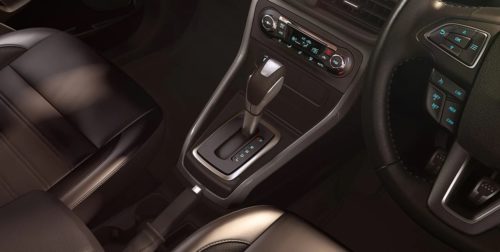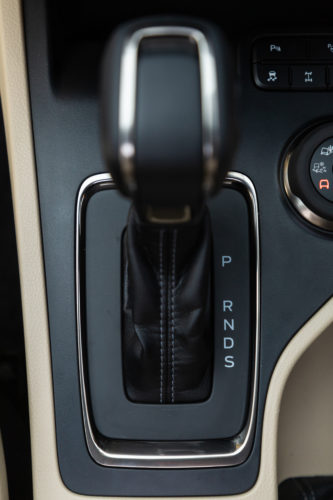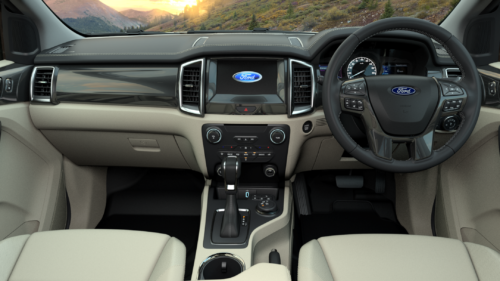Buying An Automatic Car? Here Are Some Good-To-Know Facts About Speed Transmission and Gears
Remember the days when manual cars had five gears and automatics (usually) even fewer? Things are a little different now, especially in the case of automatics. The number of gears in automatic transmission has steadily increased over the years, with most cars now featuring six at a minimum and ten towards the higher end. The modern automatic transmission cars today are cleverer, more versatile, and capable of handling whatever terrain and driving conditions you may throw at them (and for Ford cars, you get the same uncompromised fun of driving). The Ford India portfolio comprises of vehicles equipped with six-speed and ten-speed automatic transmissions, and with good reason.
How Does An Automatic Transmission Work?

An automatic transmission is also known as self-shifting transmission or AT, as this system operates without a clutch pedal. It is a type of motor vehicle transmission that can automatically change gear ratios as the vehicle moves, erasing the need to shift gears manually. And as a matter of fact ATs have become increasingly popular in modern cars due to their convenience to drivers. There are different types of automatic transmissions available, each with its own set of complex physical and mechanical properties.
Although, an automatic transmission seems pretty simple; after all, you just put it in Drive and go, but as with most things automotive, a lot of complexity goes into making it look easy.
An automatic transmission uses sensors to determine when it should shift gears and changes them using internal oil pressure. To simplify how an AT works, consider this easy analogy – The AT gearbox relies on inputs from the car’s onboard drive computer to change gears. This computer, in turn, collects inputs from various data points, such as the load on the engine and the urgency and extent of accelerator depression by the driver. It converts these inputs into a gear selection signal and passes that to the transmission. The transmission then selects a gear that will provide either torque amplification (for urgent acceleration or hill-climbing) or torque reduction (for cruising efficiently at higher speeds).
Does The Number Of Gears Matter?

Yes, the number of gears in an AT matter but there are caveats to this. A lower number of gears means fewer moving parts, less complexity, lighter weight, and lower cost. In a small car, the lower weight is of particular importance because the cars of this segment have proportionately sized engines. And the less weight these engines need to pull, the better their performance and efficiency. A good example of this would be the recently launched Ford Figo AT. The hatchback from Ford offers segment-best six-speed, torque converter automatic transmission that is paired to Bharat Stage 6 compliant three-cylinder 1.2L petrol engine, delivering fuel efficiency of up to 16kpl. Also, the popular Compact SUV Ford EcoSport’s 1.5L petrol engine (BS6 compliant), equipped with a six-speed, torque converter automatic transmission delivers 14.7kpl.
A higher number of gears, while making for a more complex, heavier, and pricier gearbox, offers several performance advantages. By adopting a higher number of gears, engineers can increase the ratio span of the gearbox substantially; that is, they can make the smallest gear much smaller and the largest gear much larger. This is because they can bridge the gap between the smallest and largest gears with a larger number of interim gears.
In effect, these transmissions have several small gears that can provide better acceleration as well as off-road crawling ability at the lower end and really tall gears that give better efficient cruising ability at the higher end. A larger number of gears also reduces the ratio differences between consecutive gears, making gearshifts more seamless. Furthermore, the gentle gear ratio differences allow these gearboxes to skip gears and select ones several cogs above or below the current cog, thus making for highly responsive and accurate performance.
This versatility of performance is what one will experience when behind the wheels of a Ford Endeavour. The SUV from Ford has been equipped with a 10-speed automatic transmission. First-of-its-kind anywhere in the world, this transmission allows the Endeavour to accelerate impressively from a standstill, crawl over all sorts of terrain without breaking a sweat, and still take to the highways with impressive speed and fuel efficiency.
How Many Gears Do You Really Need?

With most cars, you cannot choose the number of gears you would like in its automatic transmission. As a rule of the thumb, it is best to choose the car that you want and trust that the manufacturer has equipped it with the ideal number of gears.
If you are looking for high performance and versatility, you might want to opt for a car with a higher number of gears. The Ford Endeavour, because of its 10-speed gearbox, shines in the city, on the highway, and off-road too. If your car is primarily going to spend its time in urban areas, Ford Figo or Ford EcoSport, with their six-speed automatic transmissions will be perfect on account of their lower complexity and lighter weight.
With Ford’s automatic vehicles – performance, comfort, and ruggedness are all available in one exciting package. Don’t take our word for it – just Dial-A-Ford at 1800-419-3000 to book a test drive at home and confirm this for yourself!
Subscribe to our newsletter
Subscribe to our newsletter to stay upto date with latest news, offers and much more



